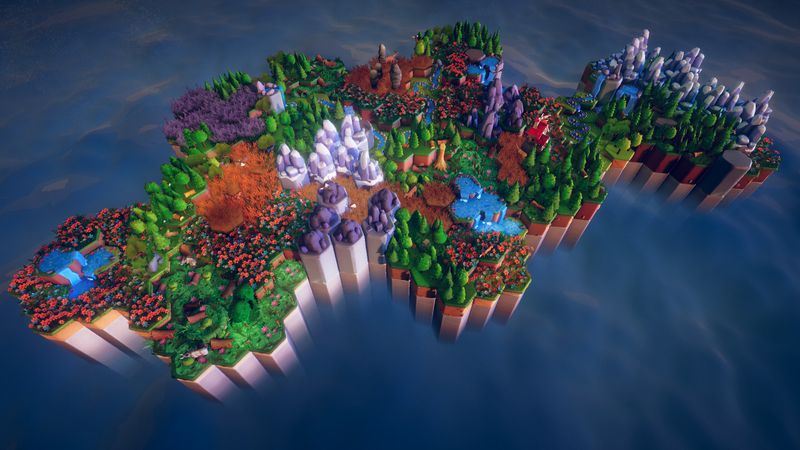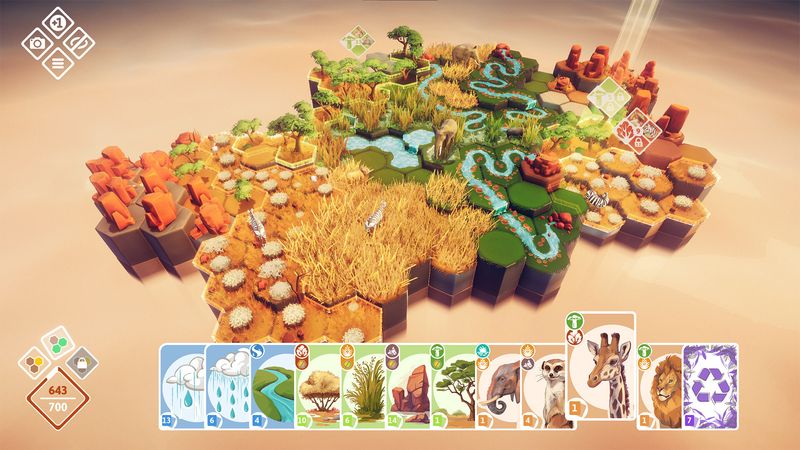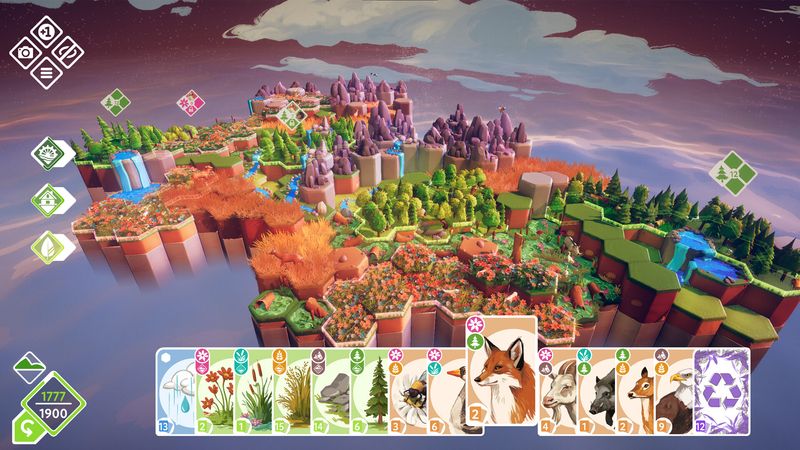Hey everyone! I just spent a week playing Preserve by Bitmap Galaxy, and I’m excited to share my cozy thoughts. If you love gentle puzzles, nature vibes, and a bit of strategy, pull up a comfy chair. Let’s dig in!
Overall Impressions
Preserve feels like a digital terrarium full of hand-drawn charm. The core idea—building ecosystems by placing plants and animals—hits that soothing spot I crave. It reminded me of DorfRomantik’s tile-laying zen and Wingspan’s habitat balance, but it still feels refreshingly unique. What stood out most? The smart mix of puzzle depth and creative freedom. On the flip side, the randomness of card draws sometimes made me feel a bit frustrated, especially when essential cards never showed up. Still, Grindstone’s polish shines through. As far as cozy puzzle games go, Preserve ranks near the top.

Gameplay Mechanics
Preserve delivers a rich variety of gameplay experiences through its three distinct modes—Creative, Puzzle, and Classic—each tailored to different player preferences and strategies.
In Creative Mode, players are free to build and experiment without restrictions. With unlimited access to tiles, biomes, and animal species, this sandbox-style mode is perfect for those who enjoy relaxed, goal-free gameplay. It’s easy to lose hours crafting serene ecosystems or experimenting with unique environmental layouts. This mode emphasizes pure creativity and immersion, making it ideal for casual gamers and nature enthusiasts alike.
Puzzle Mode challenges players with carefully designed scenarios that demand efficient thinking. Each puzzle presents a fixed map, requiring players to optimize placement for maximum ecological harmony. These puzzles serve as engaging logic exercises that test your ability to balance terrain, species, and symbiotic relationships within tight constraints. It’s a perfect mode for short, rewarding play sessions.
Classic Mode combines strategic gameplay with the joys of world-building. Here, you draw map tiles and cards representing different features and animals, placing them to expand your ecosystem until the map fills up. Smart placement earns points, unlocking new cards and tile types. The key to success lies in creating high-value habitat combinations—like pairing deer with grasslands or placing reef-loving fish in coral zones—for rewarding chain reactions.
Standout Feature
One of Preserve’s standout features is the symbiosis mechanic. Matching compatible species with their preferred environments doesn’t just feel satisfying—it also boosts your score and expands gameplay possibilities. The April 2025 update introduced a card-for-card trade feature, offering players more control over their hand. While this system adds flexibility, it sometimes leads to tough bottlenecks when the board gets overcrowded or terrain options dwindle. A proposed community tweak—allowing players to trade any three cards for one of their choice—could offer a more forgiving path without disrupting game balance.

I love the symbiosis mechanic: matching a deer with grassland boosts scores, while befriending a fish in reefs feels delightfully thematic. The new card-for-card trade addition (Apr 2025) feels helpful at first. It gives an illusion of more control, but I still hit dead ends with too many animals or too little land. A community suggestion—trading any three cards for any new one—could smooth that out nicely without breaking balance.
Story and Characters
Preserve doesn’t feature traditional characters or dialogue. Instead, its story unfolds through habitats. Each biome—Continental, Savannah, Marine (plus Jurassic soon!)—feels like a living chapter. The Compendium logs neat facts about each species. That world-building trick is subtle but effective. I’ve never rooted for a squirrel so hard! If you crave narrative, the evolving ecosystem offers a gentle tale of growth and harmony.

Visuals and Graphics
Oh, the art is simply delightful. Every tile looks hand-painted. Soft colors and clear outlines give the game a storybook vibe. I especially love watching herds of antelope roam savannah tiles. Map transitions feel smooth, and UI icons stay clean and uncluttered. Whether you play on a laptop or tablet, everything pops without overwhelming your screen. This is one of the prettiest puzzle games I’ve seen.
Sound and Music
Preserve’s soundtrack drifts in like a breeze. Light piano and ambient nature sounds set a calm mood. Bird calls and soft rustling boost immersion. I usually game with music off, but here I kept it on. The audio never fights for your attention. Instead, it nestles into the background, making each placement click feel more rewarding. If I close my eyes, I almost hear crickets at dusk.

Difficulty and Replayability
By design, Preserve balances relaxed play and light challenge. The default goals in Classic Mode push you to experiment with combos. The randomness can frustrate you if you chase perfect runs. Some user reviews note dead-end deals: too many mountain cards with no space to place them. That can make certain games unwinnable. Yet, the Weekly Challenge and leaderboards nudge you back for more. I’ve personally replayed my favorite biomes five times to chase Gold achievements. With three map sizes per biome, plus the upcoming Jurassic expansion, there’s loads to explore. Casual players can breeze through Small maps, while completionists will find hours of content.
Trivia and Behind-the-Scenes
Preserve was developed by the indie studio Bitmap Galaxy, a small but dedicated team known for their responsiveness and care. Throughout Early Access, the developers actively gathered community feedback and worked tirelessly to refine gameplay mechanics and visuals. Their attention to detail and close communication with players helped shape the game into a thoughtful and polished experience.
After months of iteration, Preserve officially launched its 1.0 version on May 15, 2025. This milestone release introduced the much-anticipated Jurassic biome, giving players the chance to design prehistoric landscapes teeming with ancient life. This addition expanded the game’s biodiversity and offered new strategies for symbiotic placement, breathing fresh life into long-term play.
One of Preserve’s charming touches is the in-game Compendium. While it serves as a useful reference for tile types and species interactions, it also delivers quirky bits of animal trivia that add heart to the game. For example, the Compendium playfully notes that koalas can sleep up to 20 hours a day—a fun fact that may not affect gameplay but definitely adds personality to your digital ecosystem.
Preserve opts for a streamlined save system: no manual saves, but a reliable autosave kicks in every time you exit. With one active save slot, the game avoids clutter and encourages focused play. This minimalistic approach keeps things clean and accessible, aligning well with the overall zen-like design philosophy.

Final Thoughts
I keep returning to Preserve whenever I need a calm, engaging puzzle break. The minor card-draw quirks don’t overshadow the game’s strengths. Between the creative sandbox and smart puzzle design, Preserve has become my go-to for unwinding.

Rating: 4.5 out of 5 stars
I docked half a star for the occasional draw imbalance. Otherwise, this game feels like a cozy hug for anyone who loves nature, puzzles, and chill vibes. If you need a peaceful world you can shape and reshape at your own pace, give Preserve a try. You might just fall in love with building tiny ecosystems as much as I have. That’s it from me, friends! Stay cozy and happy gaming.


